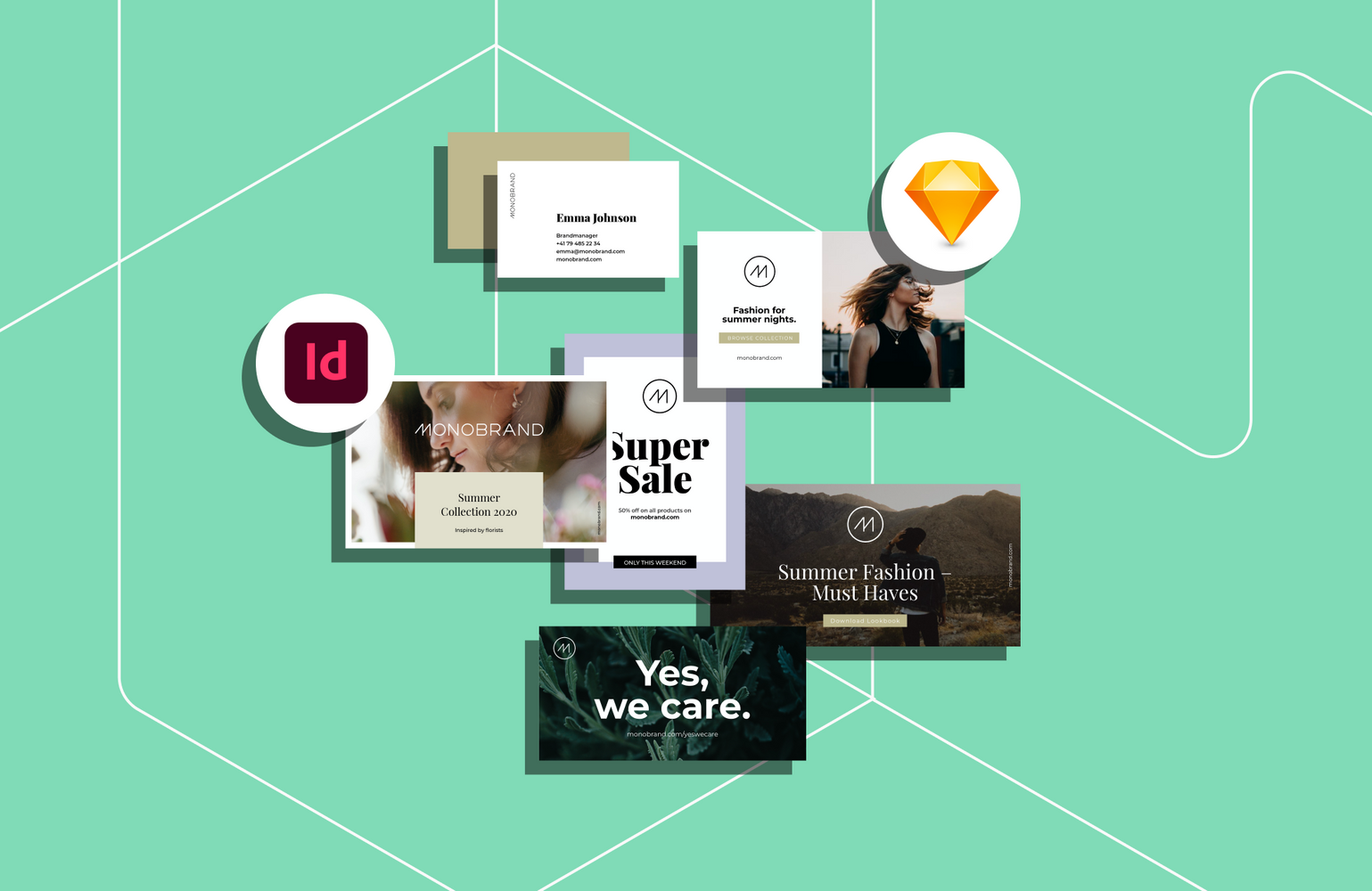
How to Use a Template System & Why You Really Should
What is a template system? Why do you need one? Most importantly, how do you go about creating it?
Ensuring a consistent and easy-to-maintain design system platform is one of the biggest headaches faced by marketing and brand teams of larger organizations. Luckily, a templating system can help. Whether you’re working for a large multinational corporation like Catawiki, the most visited European curated online market place, or a nation-wide media and television broadcaster like SRF, we frequently find ourselves delivering a centralized templating tool – as the solution of choice – to increase brand consistency and efficiency throughout marketing and brand teams.
But what is a templating system? Why do you need one? And, most importantly, how do you go about creating it?
What is a Template Based Publishing System
Essentially, a template system is a collection of templates provided by an organization’s brand or marketing team.
Templates are in direct connection with your brand assets, colors, and fonts – and typically live in a centrally located web interface. Such a system allows all types of users to independently create on-brand content for selected and predefined use cases.
Templates can be useful for a wide range of use cases, such as:
- Business Cards Templates
- Social Media Templates
- Digital (& Print) Ads
- Billboards
- Well… Anything, really.
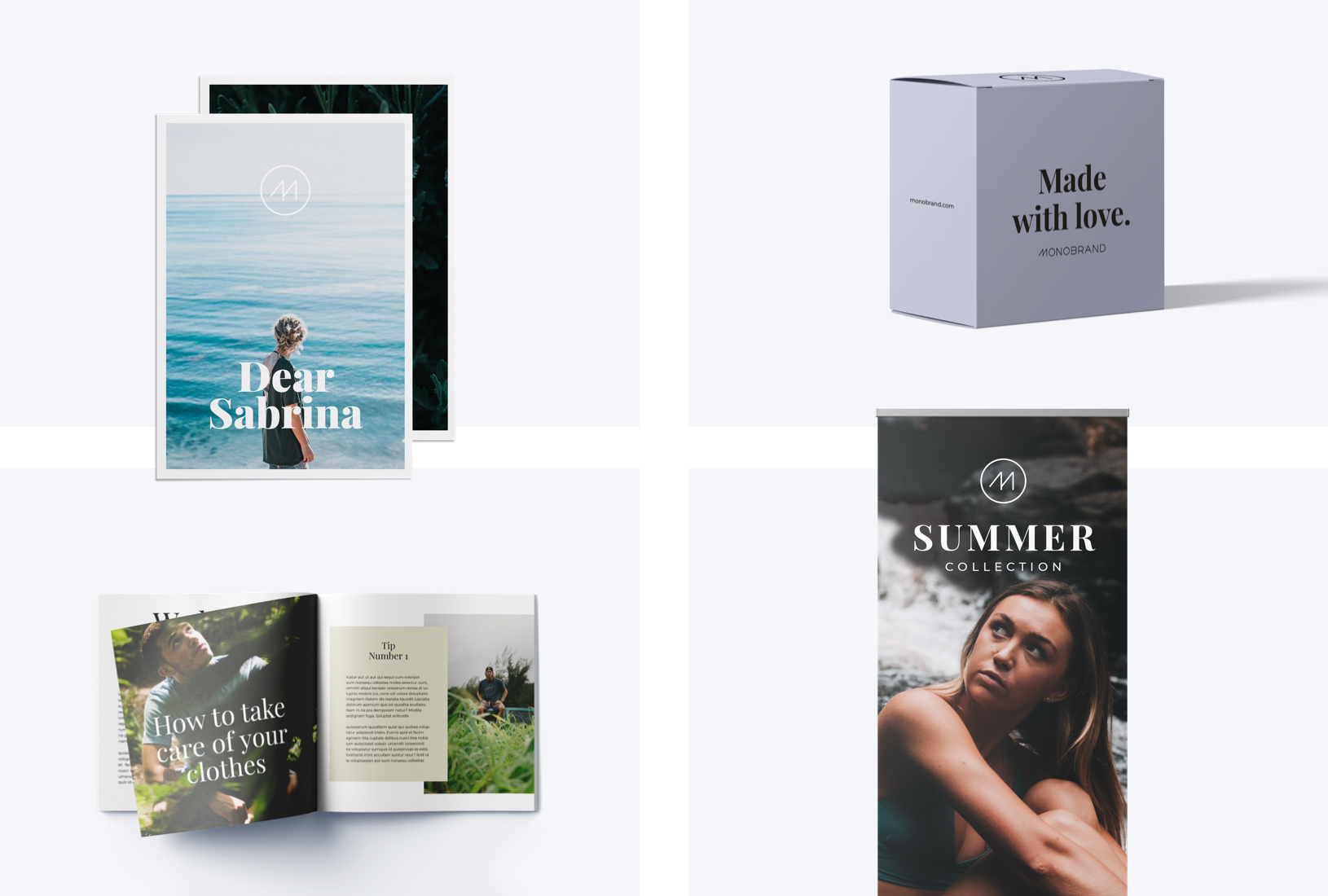
Overview of Different Templates
As a design or brand manager, you can centrally control the elements for each template. Looking at the example of a social media ad in detail, it becomes obvious that template owners want to have the full control of editable elements.
In this particular example, the following elements can be controlled:
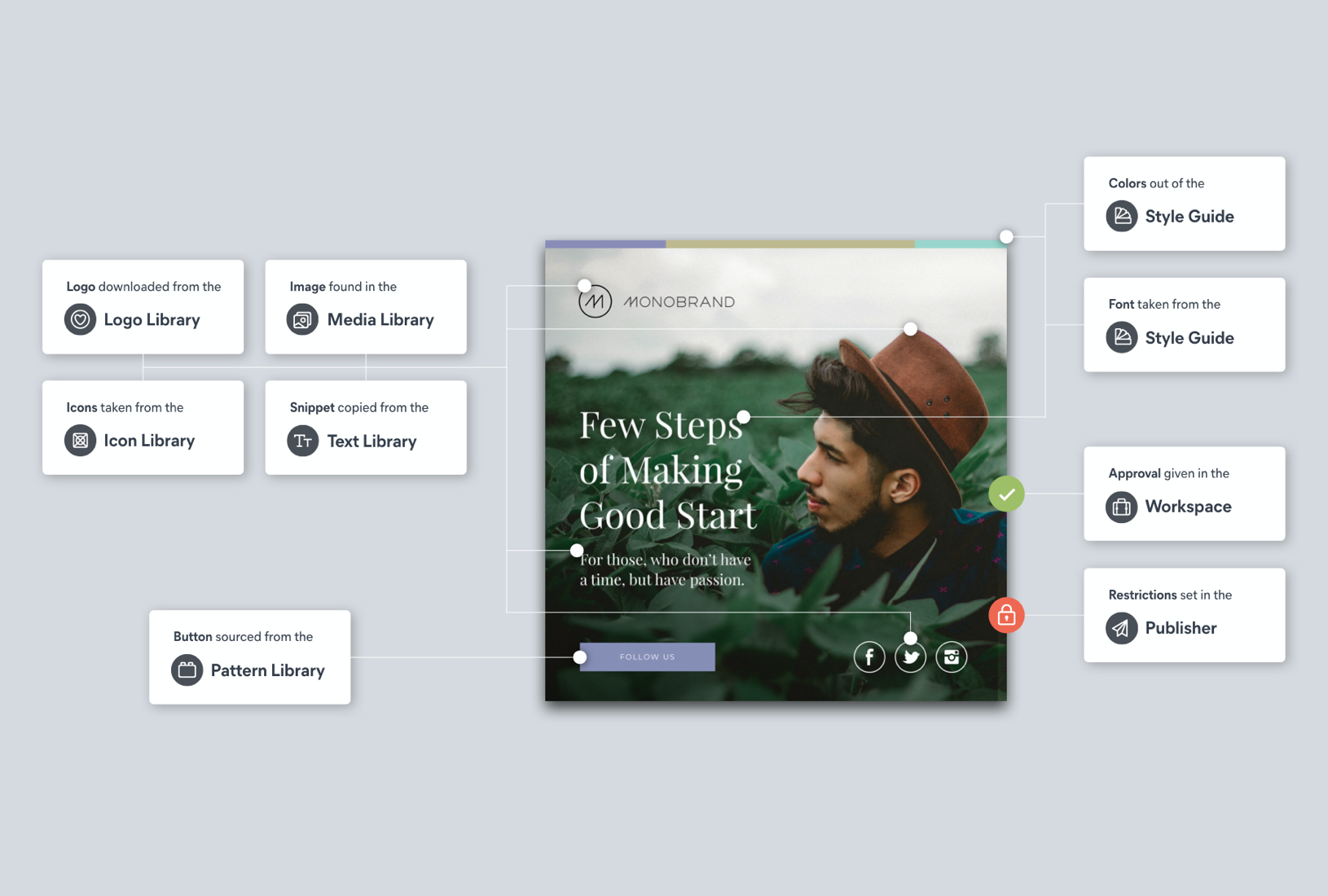
Examples of a Social Media Template Structure
- Logo: Insert logo (from a centrally provided Logo Library).
- Background image: Change the background image (sourced from a Media Library).
- Button: Change copy and color of the call to action button.
- Font: Add from your brand guidelines.
Using this template, social media templates can end up as different versions – based on localization – as seen in this example, where a campaign template has been changed to a seasonal version; from Summer to Winter.
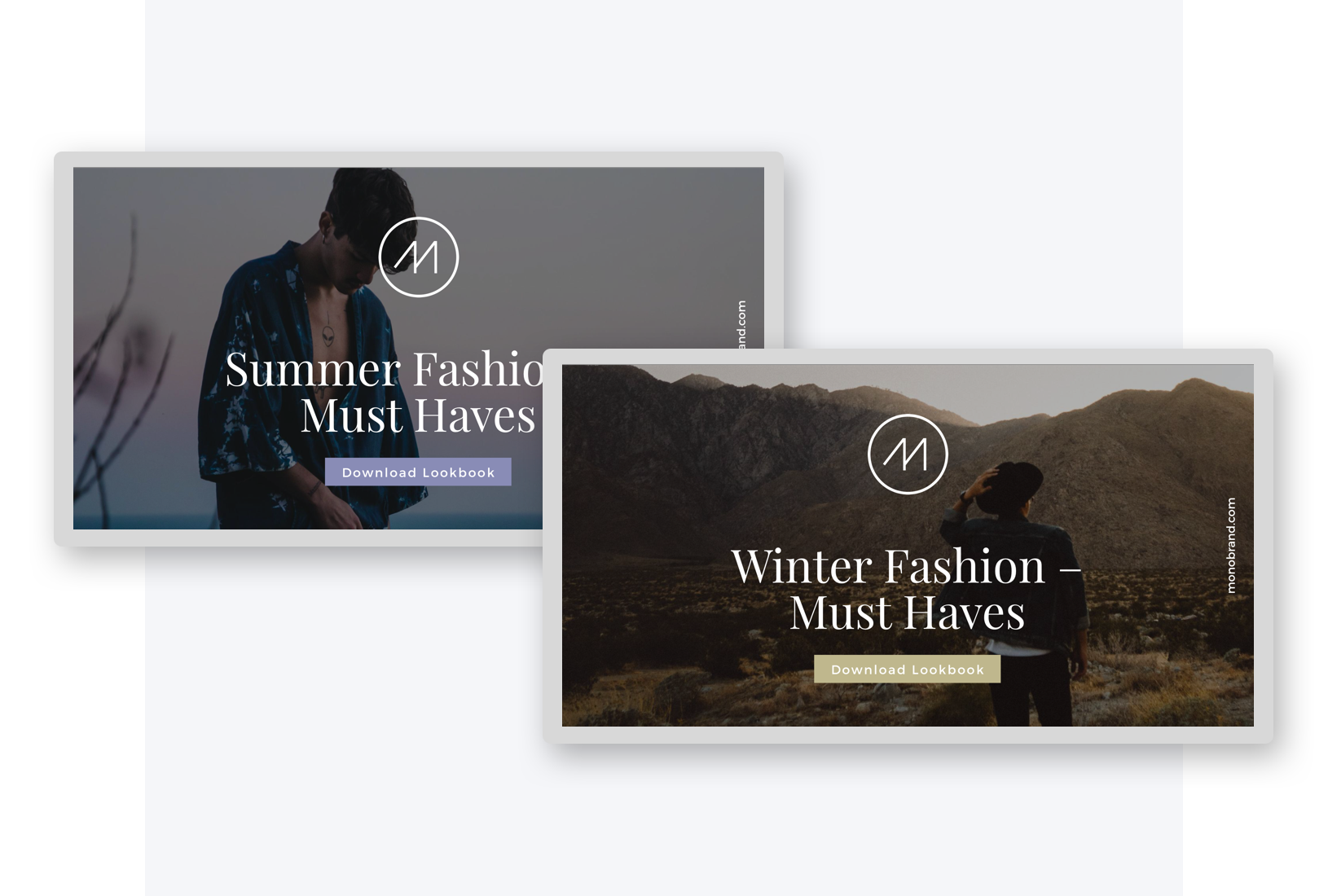
Social Media Post – Create a New Version From a Template
Why You Need a Template Based Publishing System
Once organizations reach a certain size, marketing and brand teams have to deal with higher complexity in keeping up with a consistent brand experience across channels. Since everyone in a company is creating content day-by-day, the argument for acquiring a template system is overwhelming.
Business benefits are three-fold:
- A template system ensures a consistent brand experience,
- A template system drives efficiency through enablement,
- A template system allows a faster time to market.
With a centrally governed, secure, and easy to maintain approval process, the brand and marketing teams can easily keep the overview and act as an invisible gatekeeper. Designers can focus on designing things instead of having to produce publications with no additional design value.
Here’s an example of how your approval workflow could look like.
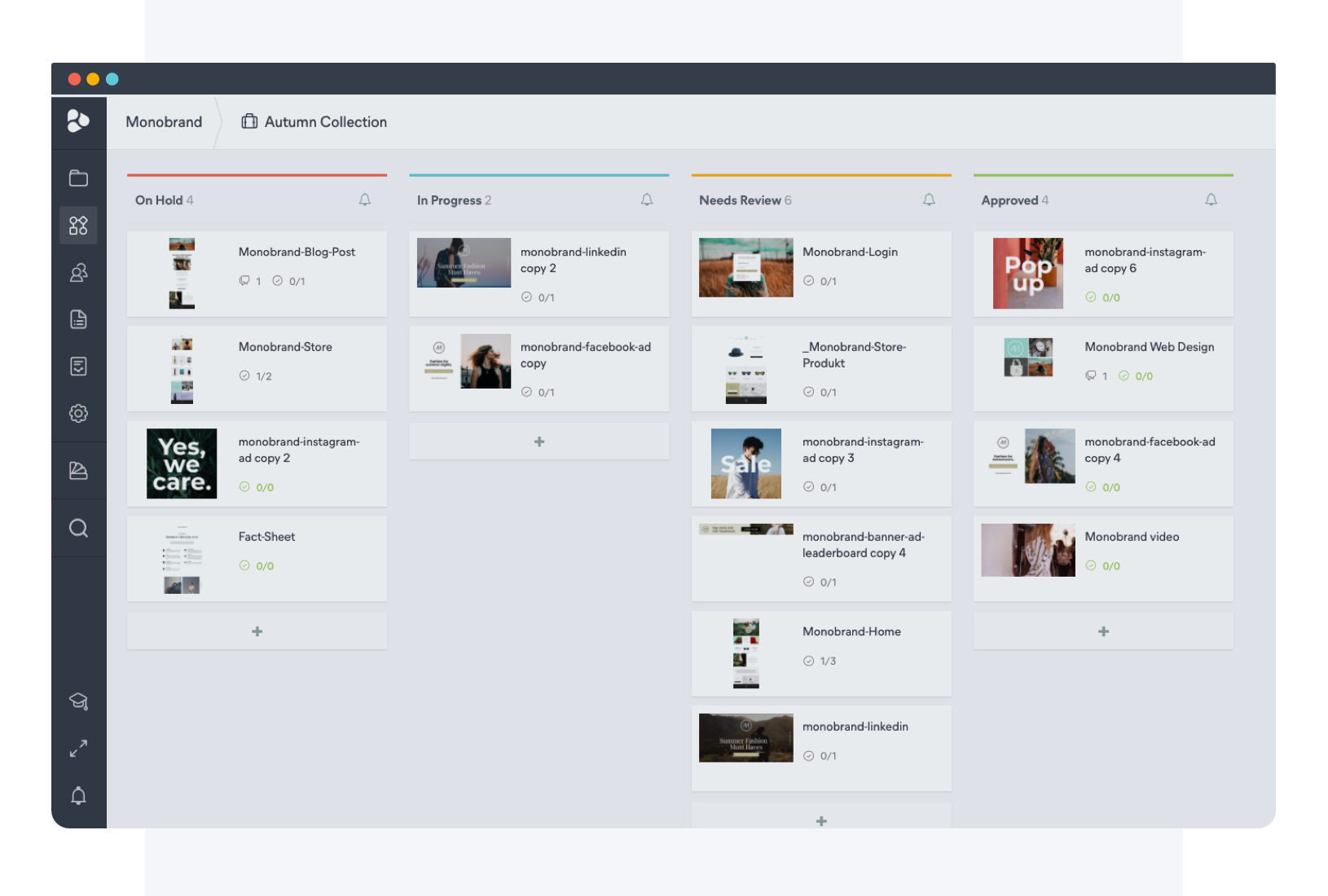
Collaboration & Approval Workflow for a Social Media Post via the Frontify Creative Collaboration
4 Tips for Creating a Template Based Publishing System
As you’ve seen from the examples above, there’s nothing particularly special about a template system. It’s essentially a collection of templates, their associated design, providing with the context of where and how to use them.
So, It might be useful to share a few of the things we’ve discovered about working with template-based publishing systems, and how to get started.
1. Make Sure You Collect All Your Use Cases
A template inventory would make sense to utilize when starting new projects. Which teams do you want to enable with templates? Interview your sales team, ask your marketing team, and do not forget to include additional teams you deem appropriate, too. What are the most usual creation processes? Get started with a list of templates you want to cover.
2. Think in Modular Templates From the Get-Go
How do you structure these templates in regards to different markets, industries, and languages? Structure your thoughts around the setup before you get started with the design, and creating galleries of templates.
3. Mindfully Define the Editable Elements
Think of how you can set up the templates to allow enough freedom to create exciting stuff – without losing too much of your control. Set limits for each and every template.
4. Make Sure Your Templates Are Easily Accessible
Make your templates available in an easy-to-access space. Provide examples and give inspiration to how these templates can be used (and who can help in the creation of them), and how a review cycle for new ones might look like.
Conclusion:
To sum this all up, well-structured, centralized templates really can help your organization work in new and improved ways. It’s here to enable everyone in your company to now only work more efficiently, saving you both time and money – but to make them brand advocated, one important cog in the wheel.
If you’d like to see more examples of how these templates could look like, some more examples will follow in an upcoming blog post.
